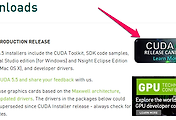C# LINQ GROUP BY
using System;
using System.Collections.Generic;
using System.Linq;
using System.Text;
namespace testLinq1
{
class Student
{
public String name {get;set;}
public int[] score {get;set;}
public String clazz { get; set; }
public int qty { get; set; }
}
}
using System;
using System.Collections.Generic;
using System.Linq;
using System.Text;
using System.Threading.Tasks;
namespace testLinq1
{
class Program
{
static void Main(string[] args)
{
Program pp = new Program();
pp.start();
}
// 참고 : http://mrw0119.tistory.com/25
private void start()
{
Student[] StudentList = {
new Student {name="아라", score= new int[]{88,73,66,91}, clazz="A", qty=1},
new Student {name="민희", score= new int[]{78,95,89,52}, clazz="B", qty=2},
new Student {name="현아", score= new int[]{88,71,100,91}, clazz="A", qty=3}
};
var Students = from student in StudentList
from score in student.score
where score > 89
select new { student.name, score };
foreach (var student in Students)
Console.WriteLine("Good: {0} {1}점", student.name, student.score);
var clz = from student in StudentList
group student by student.clazz into g
select new {clazz = g.Key, sum = g.Sum(_=>_.qty), name = g.Max(_=>_.name)};
foreach (var s in clz)
Console.WriteLine("result {0} {1} name:{2}", s.clazz, s.sum, s.name);
Console.ReadLine();
}
}
}
'Programming > C#' 카테고리의 다른 글
| [c#] 대용량 숫자 값들 중에서 중복 확인 (0) | 2016.01.13 |
|---|---|
| [bien4read] 텍스트 파일 UTF8로 변경, 그리고 줄바꿈 제거. (0) | 2015.08.03 |
| C# delegate (0) | 2014.05.22 |
| [CUDA] CUDA 사용해보기 (0) | 2014.04.07 |
| [MFC] 리스트 컨트롤 컬럼 헤더 텍스트 얻기 (0) | 2013.07.01 |
 Program.cs
Program.cs

댓글